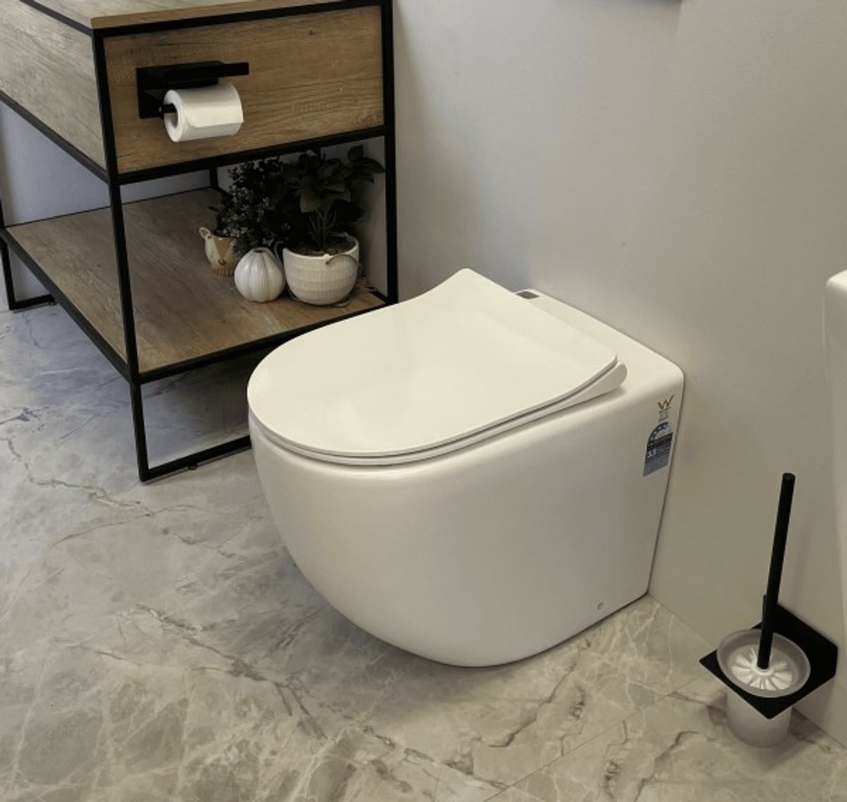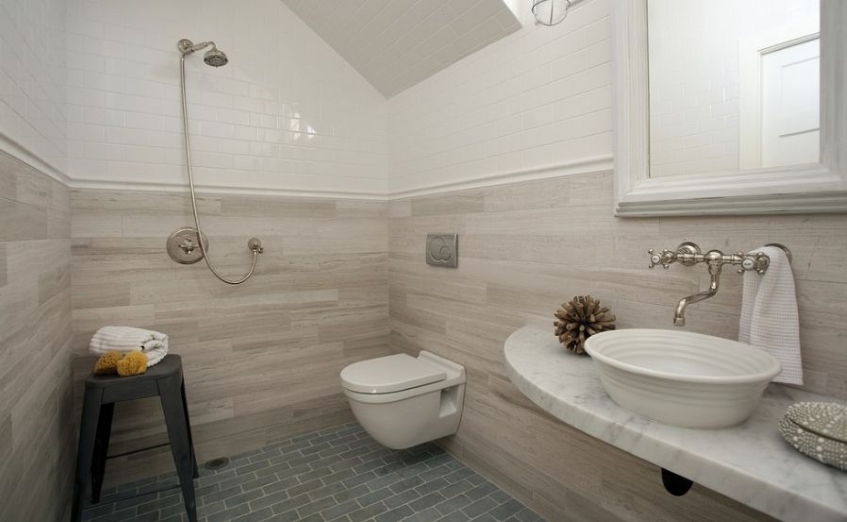Are you looking for a modern, stylish, and space-saving solution for your bathroom? Minimalist and contemporary bathrooms are not only aesthetically pleasing, they are also easier to maintain. A significant part of this neat design is the in-wall toilet, also known as the wall-hung toilet. It’s an increasingly popular choice for modern bathrooms due to the sleek design and space-saving attributes. Understanding how this type of toilet works, knowing its advantages, key considerations, and installation tips is essential for anyone considering making the switch from a traditional floor-mounted toilet.
How Do In-Wall Toilets Work?
The in wall toilets have two main components: the bowl and the concealed tank. Unlike traditional toilets, the tank of an in-wall model is hidden behind the bathroom wall, leaving only the bowl visible. The bowl is mounted on the wall, supported by a sturdy metal frame designed to handle significant weight.
The flushing mechanism is similar to that of standard toilets but is activated by a flush plate installed on the wall. When the flush button is pressed, the flush valve opens, allowing water to flow from the tank into the bowl to clear the waste. The waste is then directed into the home’s waste removal system just like any other toilet.
Advantages of In-Wall Toilets

What’s the big deal with these toilets? When installed properly, the wall toilets offer many benefits, including:
- Space Saving: Wall toilets take up less space because the tank is hidden. This makes them ideal for small bathrooms where every inch counts.
- Aesthetic Appeal: With only the bowl visible and the plumbing concealed, these toilets have a minimalist and modern look. They offer a cleaner, more streamlined appearance that can be a major aesthetic enhancement in bathroom design.
- Ease of Cleaning: Without a tank on the floor, cleaning around a wall mounted toilet is easier. The floor underneath is completely clear, simplifying the process of mopping and maintaining cleanliness.
- Customisable Height: The installation frame allows for adjustable height, making it possible to set the toilet at a comfortable level for each user, a benefit that can be particularly valuable in homes with children or individuals with mobility issues.
- Increased Durability: The wall-mounted design reduces stress on the floor, and high-quality mounting frames are built to last and can typically support up to 500 pounds or more.
Installation Tips
- Choose the right system: Select a frame system that fits the space and is compatible with the wall material. Systems from reputable brands often offer easier installation and better after-sales support.
- Reinforce the wall if needed: Make sure the wall is strong enough to support the toilet. In some cases, additional framing or reinforcement inside the wall may be necessary.
- Carefully consider placement: Position the toilet frame correctly for optimal space utilisation and comfort. The standard height for the centre of the toilet bowl is typically between 15 and 17 inches from the floor.
- Get professional help: Due to the complexity of the installation, it’s advisable to hire professionals. The integration of plumbing and mounting requires precision and understanding of building codes and standards.
- Make easy access for maintenance: Ensure that the flush plate and any panels for maintenance are easily accessible. Plan for future maintenance needs to avoid having to tear up the wall later.
Installation Considerations
Before you embark on this project, you need to keep in mind that proper installation might require a few changes to the existing bathroom space. Consider the following.
Structural Requirements
Installing an in wall toilet requires sturdy wall support, typically in the form of a metal frame system installed within the wall cavity. This frame must be strong enough to support the weight of the toilet and its user, often up to 500 pounds. Ensure your bathroom wall (be it drywall with studs or masonry) can handle this structure.
Plumbing Changes
Since the tank and flushing mechanism are housed behind the wall, plumbing modifications are usually necessary. It’s essential to ensure that the water supply and waste lines are correctly aligned with the new system. Hiring a professional plumber to make these changes is recommended.
Accessibility for Repairs
While the concealed tank offers aesthetic benefits, it can complicate repairs. Choose a system that includes an access panel, allowing for maintenance of the flushing mechanism and float without needing to open the wall entirely.
Compatibility with Bathroom Design
Ensure the wall where you plan to install the wall hung toilet is suitably located for plumbing needs and supports the additional weight. Also, consider the thickness of the wall – some systems may require a thicker partition than typical drywall.
To Sum Up
The wall toilets offer a stylish, space-saving solution well-suited to contemporary bathroom designs. While they come with higher initial costs and potentially more complex installation requirements, the benefits of durability, ease of cleaning, and aesthetic appeal make them a worthwhile consideration for new or remodelled bathrooms.
Proper installation and regular maintenance ensure that the toilet remains a functional and visually appealing part of your home for years to come. As with any significant home improvement project, professional advice and installation are recommended to ensure that the installation meets all local building regulations and functional requirements.


